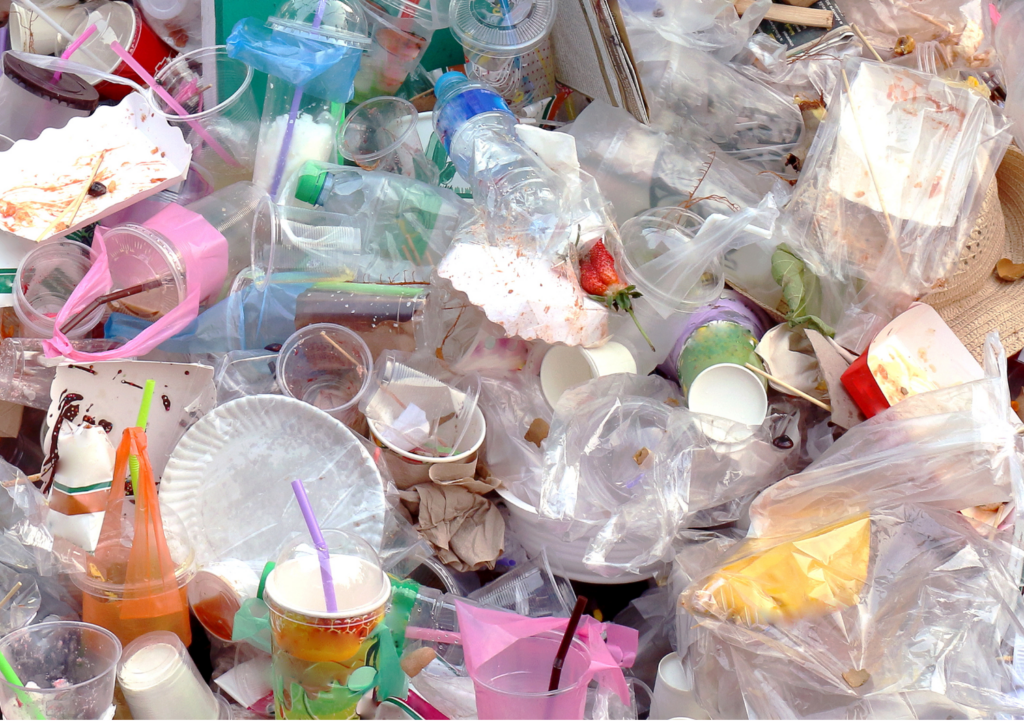Throwaway grocery checkout bags are mostly a thing of the past. That’s thanks to a federal ban that has succeeded in getting rid of what was once a common form of litter and a risk to wildlife and the environment. This ban on checkout bags and a handful of other single-use plastic items was an important first step. But it feels like the ban hasn’t made a big enough dent in all the throwaway plastics we bring home from the grocery store.

This Plastic Free July, we’re turning our focus on Canada’s major grocery chains, who have failed to act in any meaningful ways to reduce the amount of single-use plastics on their shelves. This, despite being identified by our grocery store report and the federal government as significant contributors to Canada’s plastic pollution problem.
Plastic packaging is the cause of nearly half of Canada’s plastic waste. And everyone who eats knows first hand just how much plastic comes wrapped around our food. Sure, we shoppers can try to buy stuff wrapped in a material that is widely and safely recycled like glass, metal or paper. Or better yet, stuff that isn’t packaged at all! But we don’t control what’s on our grocery shelves: the grocery chains do. And the reality is that they seem hell-bent on selling us their products in plastic.
As we all know, grocery chains are raking in record profits while the rest of us face skyrocketing food costs. In fact, profit rates for food retailers have more than doubled since before the pandemic! Economist Jim Stanford estimated their profits at $6 billion in 2023 alone.
What if they simply invested some of their copious profits in convenient reuse and refill systems that allowed packaging to safely be used over and over again? It would certainly help solve the plastic pollution crisis.

Research in other sectors like restaurants have shown that businesses recoup the costs of investing in reuse because reusing the same packaging over and over again greatly reduces the costs of constantly having to buy new materials and dispose of waste. That means the environment and governments benefit, too, with less litter and municipal waste to manage.
This is not rocket science. It is eminently possible to reduce plastic in the grocery store – in fact, France has already phased out most plastic packaging for fresh fruits and vegetables. Their government has also set a target of reducing single-use plastic packaging by 20 per cent by next year, with at least half being replaced by reuse/refill systems.
Big grocery chains clearly have the means to reduce packaging and food waste and, as we’ve just laid out, there are plenty of good reasons to do it. So why aren’t they?

Unfortunately, despite their public commitments to a “circular economy,” these retailers are going all in on the status quo. They’ve even opposed a federal “pollution prevention plan” requiring them to come up with their own plans to reduce the amount of single-use plastic packaging they use for food products. This could include measures such as reuse/refill systems, eliminating packaging where possible (for example sturdy produce that has its own natural protection, such as potatoes and citrus fruit), and/or using different packaging materials, like glass or metal.
Frankly, it is shameful that they are not already doing it. Big grocery CEOs need to get the message that the status quo on plastic packaging is not acceptable. They must do their part to address the plastic pollution crisis.










